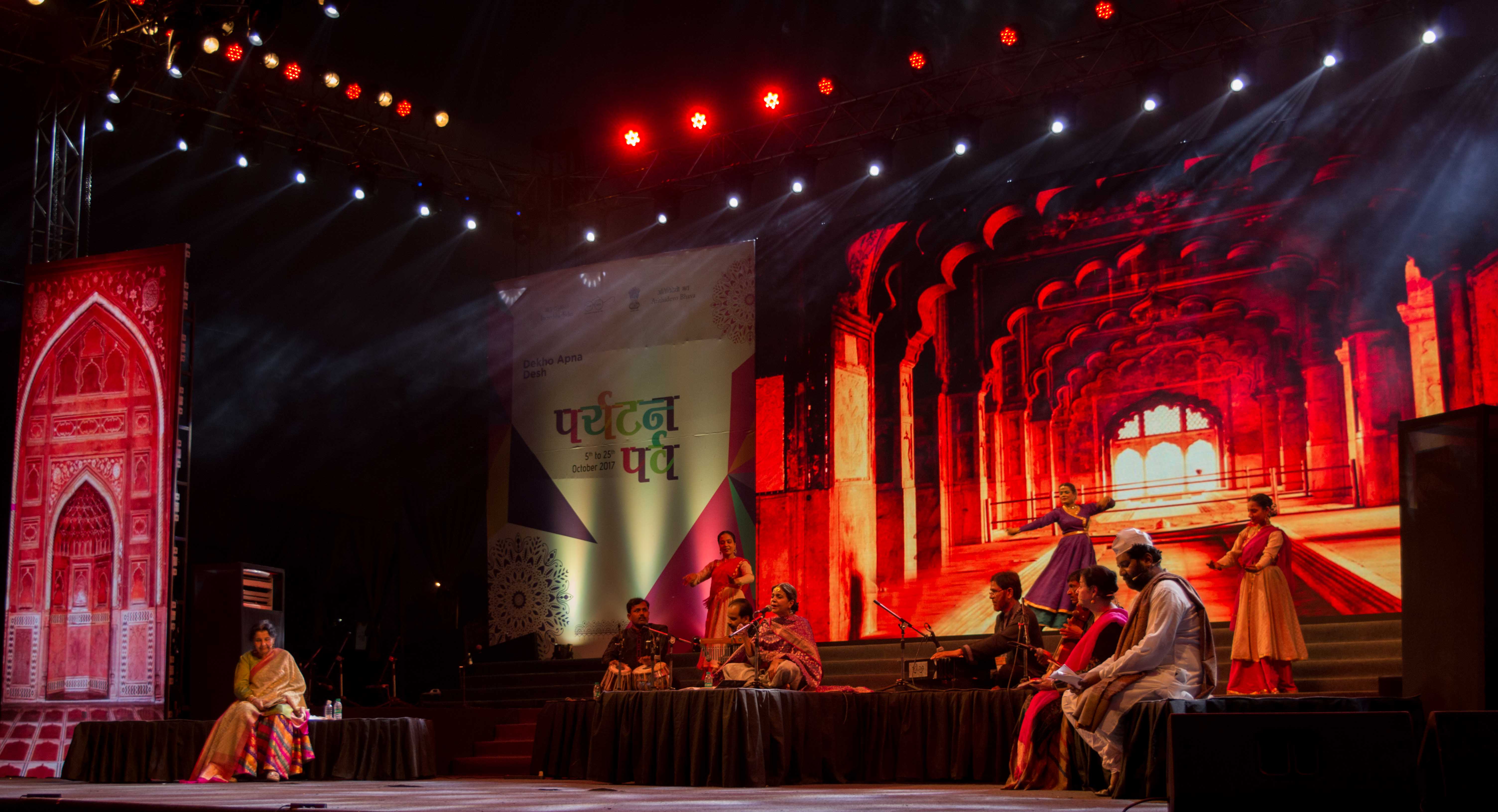Shahjahanabad: Purani Dilli Ka Dastaan
RUTH ZOTHANPUII

Dilli ke na kooche thhe,
Auraq e musavir thhe,
Jo shakl nazar aayi tasveer nazar aayi
(Delhi’s streets were not alleys but pages of a sketch book
Every face that appeared was a painting).
Yesterday, October 23 2017 we listened spellbound to these opening lines from Mir Taqi Mir, 18th-century Urdu poet. Shahjahanabad: Purani Dilli ki Dastaan began to unfold and we start tracing Dilli ki Tehzeeb (Culture). Like anything that is old, Purani Dilli has stories manifold, and its own tale can only be unfolded by visiting, and exploring the bygone era of the city.
Dilli, a City built and rebuilt seven times, is a city of scholars, of poets, of saints and sinners, of monuments; having its own culture, beauty and richness. Of Dilli, Ghalib said, ‘I asked my soul: What is Delhi? She replied: The world is the body and Delhi its life’.
Begum Zakia Zaheer's Shahjahanabad: Purani Dilli ki Dastaan, a multimedia presentation in Urdu attempts to capture the quintessence of this old Delhi before the mutiny. Syeda Hameed, Zakia Zaheer and Lokesh Jain narrated stories including anecdotes about the courtesan culture of Dilli, depicting the days of the last Mughal emperor, Bahadur Shah Zafar, and then moved towards incident in the life of celebrated poet like Ghalib and the syncretic tradition of Bahadur Shah Zafar.
Songs of Saawan sung by Rene Singh celebrated Saawan in Purani Dilli. Ghazals of Mirza Ghalib, Mir Taqi Mir and Bahadur Shah Zafar were interspersed. Music, Poetry and Dance recreate the spirit of harmony that prevailed in Purani Dilli during the reign of Bahadur Shah Zafar.
The show presented by Hamari Urdu Mohabbat (HUM) was one of the special feature of the grand finale to the 21 day Paryatan Parv on Rajpath Lawns, New Delhi. It is a nation-wide celebration of Tourism from October 5-25 2017 organised by Ministry of Tourism in collaboration with other Central Ministries and State Governments to showcase the cultural diversity of the country and to reinforce the principle of ‘Tourism for All.’
The show presented the history of Delhi, a day in the life of its last builder, the last Mughal Emperor Bahadur Shah Zafar. It portrays not only his life but also the life of the Awam of Dilli, exhibiting the harmony, tehzeeb, languages and life style of those times in Music, dance and dastangoi.
Begum Zakia Zaheer, the director, HUM explained the idea behind the show, “Highlighting this culture is to encourage citizens to once again join hands and bring about similar affability between people of different religions and acknowledging the contribution of both Hindus and Muslims. As well as underscoring the contribution of Bahadur Shah Zafar for introducing an unparalleled culture and sense of unity through his patronage of literature, poetry, music and art and his equal treatment to everyone irrespective of their religion”.
She added, ‘Bahadur Shah Zafar understood the role of culture in promoting universal harmony and he was a distinguished poet himself. He promoted many notable poets, including the much-adored Mirza Ghalib. All forms of art and architecture were encouraged giving Dilli an uniqueness all its own’.
Stating recent times friction and animosity, which generated bitterness, Reyaz Ahmad, a young man from Jamia Nagar said, “It is a timely effort to bring the show to center-stage”. He was of the view that all Indians deep down in their hearts yearn for social harmony. ‘It is important to bring back the harmony and amiability of that period of our history, we younger generation can learn a great deal from it,’ he added.
‘I loved the programme for beautifully weaving interesting narration with ghazals, bhajans, anecdotes and dance and giving a vivid glimpse of the life in Purani Dilli 200 years ago,’ said Harsh Agarwal, who came all the way from Vasundhara Enclave to see the performance. He continued, ‘Now, whenever I will visit the bylanes of old Delhi, I will have a new way of looking at the place. I also loved the programme for showcasing the Ganga-Jamuni tehzeeb and Hindu-Muslim unity of that time. There is a lot we all can learn from it.’
Rahim Zullah from Brisbane Australia said, ‘It was a privilege to see the show. I learnt a great deal about the history and culture of Dilli, the synthesis of poetry, music and dance. I am a music teacher, and I love poetry. I have sung these poems but did not really know the poets’ background. This is an interesting way of learning about Delhi’s past.’
‘Purani Dilli ki Dastaan' Sukhpreet Kahlon, a student of Cinema Studies from JNU said, ‘took us through the history of the city of Delhi and brought to life the City and its hustle- bustle during the time of the Bahadur Shah Zafar. Through the use of music, dance and language, the performance conjured up the rich culture and harmony of Delhi, transporting the audience to the milieu of the time’.
The tameez, tehzeeb, music and culinary delights of that era live in the minds and hearts of people cutting across different regions. the celebrations of the common people complete with their songs and dances as also the festivities of the royal court including recitation of poetry written by the emperor himself.
Dekho nigah-e-naaz se dilli ke nazarey
Tehzeeb ki jannat hain ye Jumna ke kinarey
(Look at Delhi’s scenes with pride filled eye
A Paradise of culture, these scenes by Jumna’s side).
(Ruth Zothanpuii is a student of literature from Aizawl, Mizoram. She is an Honorary Fellow at K A Abbas Memorial Trust since its inception in 2013 and its web content developer. She has a Master’s from Jadavpur University, Kolkata. She has also been Consultant and Secretary to the Member Planning Commission where she worked with social sectors from 2006 to 2014).
(Photograph by Amina Razzack )



